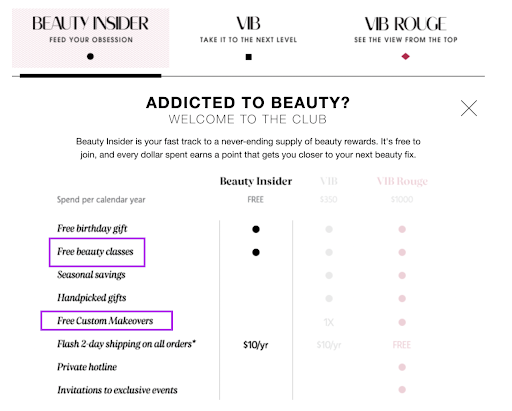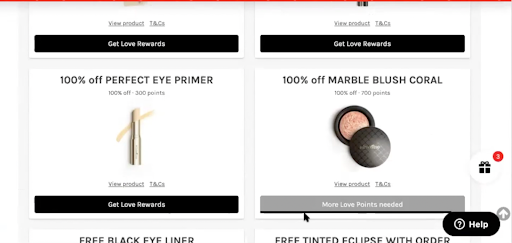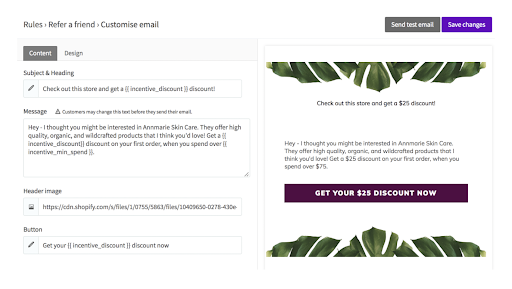This guest post is written by Aleana Bargaoui, Founder at
Brands Are Alive
. Aleana, a loyalty and customer retention expert, is passionate about helping ecommerce brands turn their customers into loyal advocates.
While everyone else is scouring the internet for the ‘ultimate’ BFCM discounting strategy, I want to invite you to consider how much things have really changed since the days of lining up overnight to go under the human stampede at the crack of dawn for that sweet BFCM deal.
With the explosion of ecommerce activity after the pandemic, the stampede was replaced by deep confusion on both parts — advertisers are struggling more than ever to capture and retain attention, and consumers are struggling to navigate the information overload amidst all the noise.
Recently, LoyaltyLion published research titled
The new discounting playbook
, in which they revealed how customers
really
feel about BFCM in 2021.
58% of those surveyed say that BFCM deals impact their trust in brands, while 59% feel that brands focus on winning new customers over making their existing customers feel special during BFCM.
This shows there is a real opportunity to stand out and create long-lasting impact by being one of the few brands to do things differently. This article explains how to nurture your existing shoppers into loyal customers throughout the holiday season and beyond.
How to create and sustain loyalty
Step 1: Create an emotional connection
These questions will help you start on the right foot when capturing the attention of new customers.
-
Why does your business exist, other than to make financial profits?
-
How is your business making lives better?
If you’re still unclear, ask your best customers what makes your brand special to them.
Don’t just ask repeat buyers, but go for the extreme outliers, and raving fans. Those whose repurchase frequency, order value, and engagement rate are much higher than average.
Step 2: Build Emotional Capital
Don’t drop the ball once you’ve captured their interest. Now is the time to maintain long-term attention and encourage loyalty, by building Emotional Capital.
Emotional Capital is accumulated by delivering a series of emotionally impactful experiences.
The following 3 points are not exhaustive, but should cover most of your bases:
Make the value clearly higher
It goes without saying that your product should deliver on its promise. But to make a lasting impression on your customer, you have to exceed the expectation.
The bigger the gap between perceived value and price, the more impactful the experience.
Don’t just use this as an opportunity to get rid of slow inventory by throwing in a cheap item that no one wants.
Sometimes they value something else, maybe an easier shipping experience, or faster customer service, or heck, prettier packaging. Understand what your customer actually wants, and give it to them. Remember, the value is based on their perception.
Take charge of every part of their journey
Rave-worthy brands don’t ask their customers to “get in touch with USPS” when their package is lost. They don’t blame anything on the manufacturer, 3rd party fulfillment center, shipping courier, or the weather.
Whether or not you do it in-house, you must take responsibility for every touchpoint. A simple rule of thumb is this: If it affects your customer’s experience with your brand, then it is your responsibility.
Take care of your team members’ wellbeing
Here is an interesting observation: How your team feels about work is a good indicator of how customers feel about the brand.
It shouldn’t come as a surprise, but the mental and emotional state of your team members affects your customer experience far more than you realize— even if they are not in direct contact.
Step 3: Strengthen loyalty behaviors and turn them into habits
Even if you have made an impression on a customer, their loyalty behaviors will likely be sporadic and up to chance. To make them more consistent, we need triggers and rewards.
Best practices for the reward:
-
Make it timely: If there is a time lag between the reward and the behavior, no positive emotion is associated with the behavior, and no habit is established.
-
Make it repeatable: It’s important to design quick and consistent wins to create and keep momentum.
-
Make it worth it: The perceived value of the reward should be motivating enough to take the action. The bigger the ask, the higher the reward.
Again, this goes back to knowing your customer. If you understand their problems and desires, you know which incentives will motivate them the most.
That’s why Sephora incorporated other incentives, such as exclusive content (free beauty classes), and custom makeovers (a desired service, and a chance to upsell on more products).
4 loyalty tactics to make your customers feel special
Here are some loyalty incentives near-guaranteed to make your customers feel appreciated this BFCM:
1. Give them a free and exclusive product
If you’re looking for tried and true, this might be the earliest loyalty program in history- and the most potent: It has been going strong since the 19th Century.
In the mid-1800s, Sweet Home Laundry Soap (a New Hampshire merchant) started giving out copper tokens to buyers, which they could later exchange for
premium products
only available for purchase to these token owners. This was a huge success and lasted throughout the 19th and 20th centuries.
Source: Catalog of Babbitt’s Premium products
This works for a few reasons:
-
A gift in the form of a physical product feels more real
-
It rewards them for being a customer and connects it to a feeling of exclusivity
Here is a similar modern-day example from Mirenesse:
2. Surprise them with unconditional points:
Surprise your existing customers this BFCM by depositing an unexpected, unconditional balance of loyalty points in their accounts. Then, send them an email or message along the lines of “remember to gift yourself too, this year.”
Why it works:
-
The surprise element alone creates a dopamine hit
-
Unconditional giving is more generous and better received
3. Make the giving charitable
In
The new discounting playbook
, 63% of consumers said they wanted brands to give them an opportunity to contribute to a charity or initiative aligned with their values.
Instead of giving discount rewards for their loyalty points, customers can choose from a variety of charitable actions, such as giving away free meals or planting trees.
Why it works:
-
It can be more satisfying than taking a few dollars off a purchase
-
It associates a good feeling with the brand
-
It reaffirms your brand’s alignment with their values
-
The holiday period is prime time for giving
4. Expand your giving to their friends and family
If you want to weave your brand into their lives even further, help them give to the people they love.
Every positive review a customer leaves is a chance to connect and get a referral.
To do this, integrate your LoyaltyLion account with your review app, and your email service provider.
Here is a list of all native integrations
.
Then, create an email segment targeting any customer who has recently left a positive review, and ask them to use their personal referral link to refer 2-3 people who might like your brand (or to join the loyalty program, if they’re not yet members).
Be generous with your giving, and remember that while it can feel nerve-racking to give out too many points, you are not aiming to have a profitable first transaction when acquiring a new customer. Your LoyaltyLion Customer Success Manager can help you make sure you are rewarding points responsibly. Alternatively, you can use a tool like
Lifetimely
to make better lifetime value decisions.
Your messaging counts, too. Help them sell your brand with your own set of value propositions.
Here’s an example from Annmarie Skincare:
For more alternative discounting and incentive strategies for this BFCM, you can
download Part 2 of The New Discounting Playbook here
. Or check out the
LoyaltyLion Academy Course
for the webinar titled “Six ways to turn one-time BFCM shoppers into long-term loyal customers”.
Key takeaways:
-
Brands that are going to win are the ones that prioritize loyalty and relationship-building
-
This BFCM, rather than purely eating into your profit margins and hoping that these acquisitions will become profitable in the future, use incentives to capture short term attention, then build emotional connections and a long-lasting relationship
-
Use a tool like LoyaltyLion to further strengthen loyalty-behaviors and help turn them into habits
-
Your brand’s relevance to your customer is ultimately determined by how abundantly you place their interests above profit












